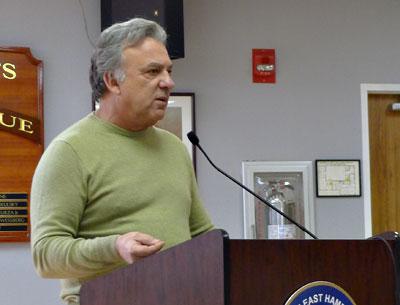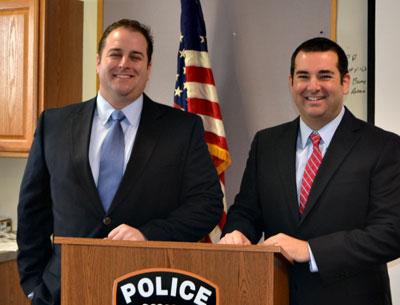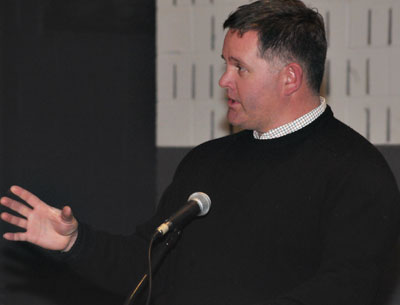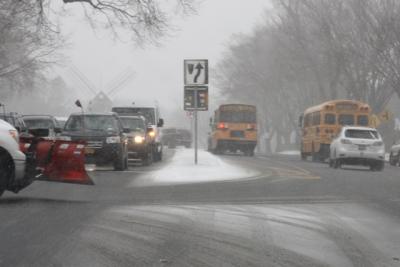East Hampton Wants People to Stay Home Wednesday
East Hampton Wants People to Stay Home Wednesday

While the snow stopped falling in East Hampton Tuesday evening, town officials are still asking people to stay off the roads Wednesday as highway workers continue to contend with the more than 20 inches of snowfall.
East Hampton Town and Village government offices will be closed on Wednesday, and classes at all local schools have been canceled. Southampton Town, however, is opening government offices at noon.
East Hampton Town Councilman Peter Van Scoyoc, who is the deputy supervisor and was in charge while Supervisor Larry Cantwell was away this week, said the hope is that people will stay home and give the Highway Department another day two make the roads safe enough for travel. "We are still in a state of emergency. We want to keep people off the roads. Driving restrictions are still in place," he said, adding that there were "virtually zero accidents" reported because people were heeding the travel bans.
Speaking by phone on Tuesday night, Mr. Van Scoyoc said he had just spoken with Stephen Lynch, the highway superintendent, and that 90 to 95 percent of the town roads, not including urban renewal roads, had been opened or would be opened by the end of the night. That does not mean they have all been completely cleared. Workers were going to take a break at midnight, and then get back out on the roads at 5 a.m. Urban renewal roads will be plowed by private contractors due to the state of emergency declaration.
"If everyone comes out [Wednesday], it will just make the plowing that much more difficult, and dangerous," Town Police Chief Michael Sarlo said Tuesday night by email. "Highway crews are making progress, but it is going to take into Thursday evening before everything is passable. . . . There is only so much they can do," he said, adding that he hopes everyone will show patience, "and recognize this was a major storm."
In East Hampton Village, the Highway Department worked for over 20 hours to plow the snow, according to Deputy Mayor Barbara Borsack. On Tuesday evening, she said all of the village roads had been plowed once, and some twice. "This snow is so deep it's taking a long time for them to get the roads cleaned," she said. Crews were taking a break, but were going to be back on the road at 9:30 p.m. to work through the night because additional cleanup was still needed.
While Gov. Andrew M. Cuomo's travel ban on all state and local roads in 13 counties, including Suffolk County, was lifted Tuesday morning, Southampton Town's travel ban remained in effect overnight. Supervisor Anna Throne-Holst's order making it illegal to drive starting Monday at 7 p.m. will be lifted on Wednesday at 6 a.m.
Mr. Van Scoyoc said that East Hampton officials will meet again on Wednesday and assess the road conditions, possibly relaxing the restrictions later in the day. Town officials will also further assess coastal erosion and damages, though Mr. Van Scoyoc said he wasn't aware of any loss of property. "What I understand is that while the tides came up high they did not breach," he said. "Tides certainly didn't go up as high as some forecasted." Hurricane-force winds were predicted, but never materialized he said.
Warming centers and shelters were not opened because power outages were not widespread. Early Tuesday morning, PSEG Long Island reported about 630 customers in Montauk without power, but power was quickly restored. "At this point the threat of power outages seems very low," Mr. Van Scoyoc said. The East Hampton Town Senior Center was kept open and staffed for people who had medical equipment that needed to stay plugged in. It was also used as a place for highway workers to rest throughout the day.
Also worth mentioning, several organizations are following East Hampton's lead and keeping doors closed on Wednesday. The East Hampton Library will not open, and the Ladies Village Improvement Society of East Hampton will put off, again, its much anticipated $1 sale another day, and stay closed at least until Thursday.





